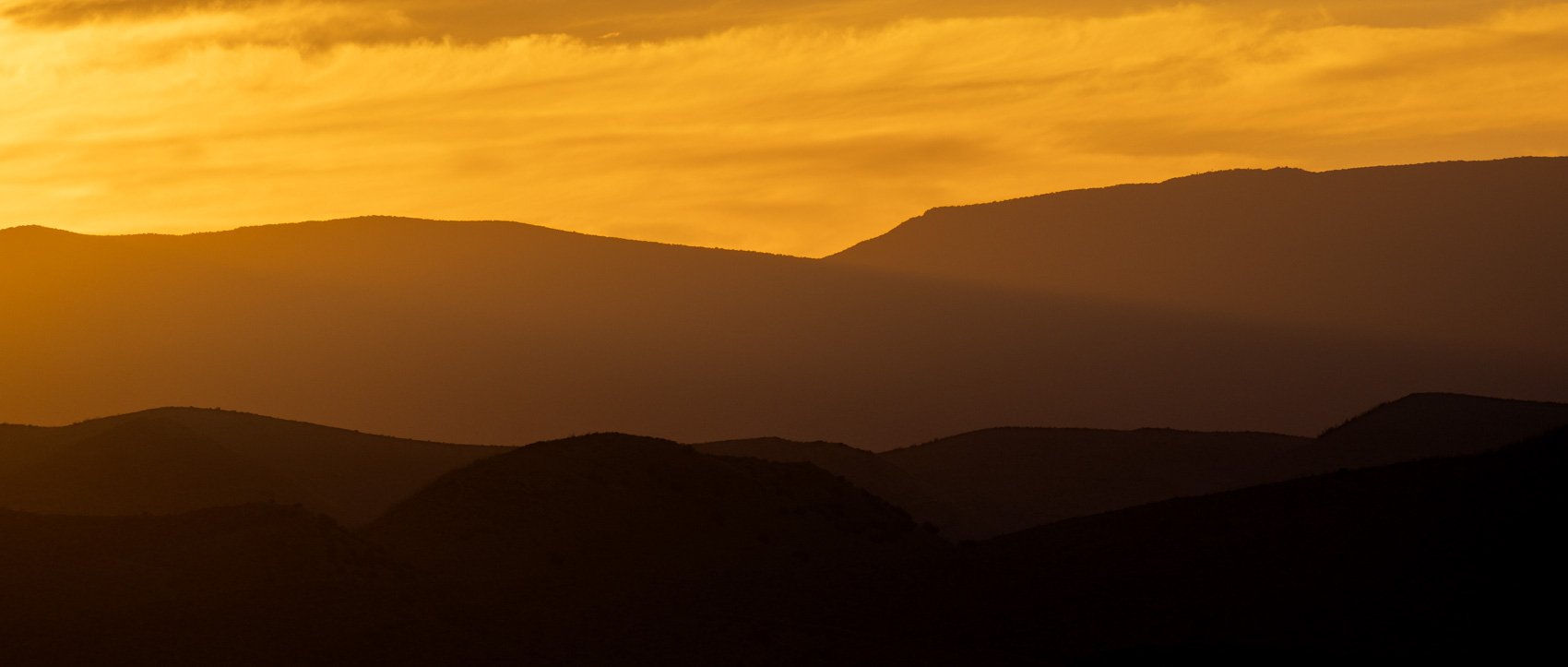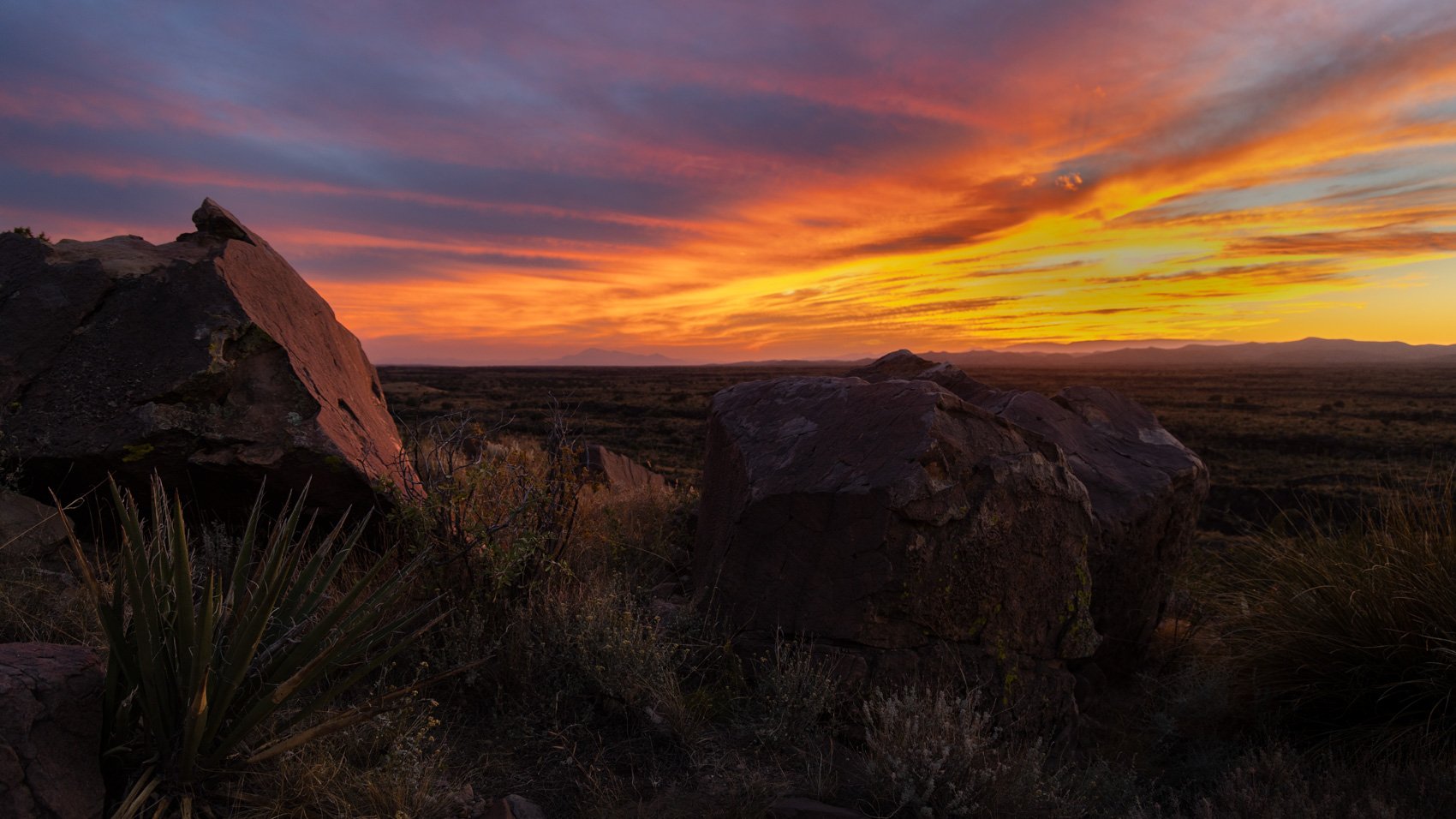My prior visits to New Mexico had always included incredible sunrises or sunsets. This trip had mostly clear skies—which was perfect for the day of the eclipse—and days with clouds just had nice, but not spectacular displays. One event the trip was planned around was the twice-a-year Saturday that the Trinity Site would be open to the public. I wanted to camp close by, so I could get in line before sunrise. I choose to camp at a Bureau of Land Management site I’d hiked at on prior trips to the area. A meteor shower was predicted for the night, so clear skies would be great.
Valley of Fires Recreation Area
The area is the northern part of the Tularosa Basin, and here about 5,000 years ago, the Malpais Lava Flow covered the basin. Today, yucca, sotols, cactus and other desert plants grow within the lava rock. Following a hike through a trail cut among the lava, we returned to our camping spot where we had a high look out behind us. Lots of clouds began to move in. Would they cover the sun, or would the Valley of Fires have a blazing sky?
The sun set with nice golden color behind the distant San Andres Mountains. Another photographer had come for some images and left. But sometimes the best color arrives well after the sun goes down. We sat among the rocks to enjoy the changes.
And we were rewarded for the show. The next morning we’d be on the other side of the first ridge of mountains where the Trinity Site was the test for the first atomic bomb in 1945.
The show was mostly done. Time for the flashlight to help get back to camp. The clouds would block the meteor shower for that night, but the sunset was a terrific exchange to miss that sky show.





